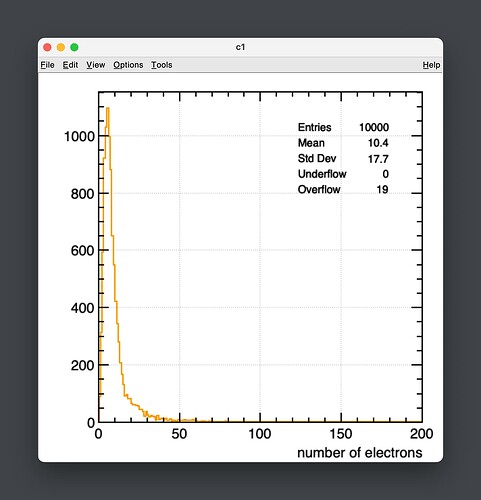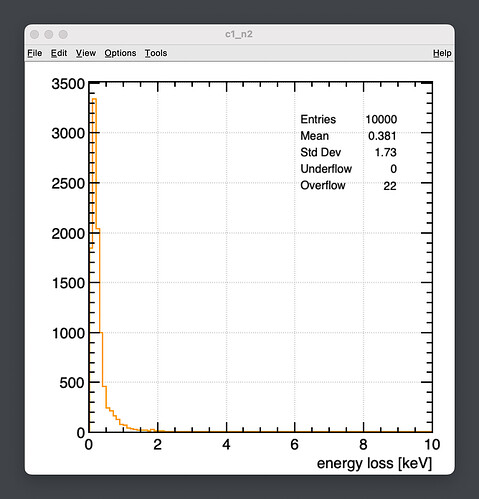Hi experts,
I’m curently simulating a plane parrallel ionization chamber geometry filled with air in order to get the gain of the IC. I’m at low field (5000 V/cm) so no multiplication. The gain should then be the total number of electrons created. I shoot protons with E_{kinetic} = 230 MeV across 0.1 cm gap.
Using TrachHeed and taking the mean on 1000 tracks I get 10.4.
Multiplying the mean energy loss on those 1000 tracks by the mean energy of pair W track.GetW() I get 12.89.
And using the stoping power S track.GetStoppingPower() and calculating this way Gain = \frac{S~d}{W} I get 12.26
Shouldn’t those 3 ways give the same result ? Which one is the more realistic ?
Thank you in advance for your help
Kind regards
Pierre

